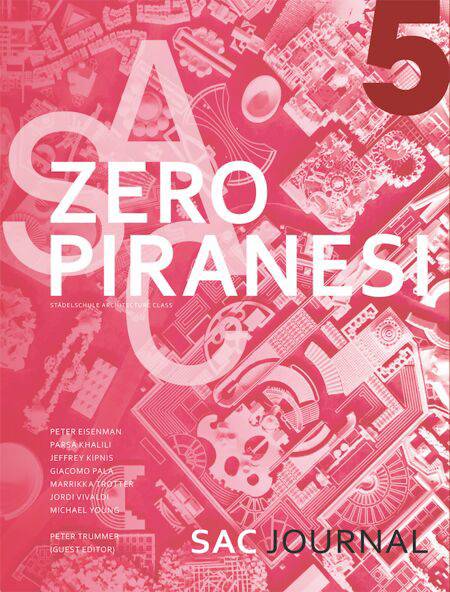
Je cadeautjes zeker op tijd in huis hebben voor de feestdagen? Kom langs in onze winkels en vind het perfecte geschenk!
- Afhalen na 1 uur in een winkel met voorraad
- Gratis thuislevering in België vanaf € 30
- Ruim aanbod met 7 miljoen producten
Je cadeautjes zeker op tijd in huis hebben voor de feestdagen? Kom langs in onze winkels en vind het perfecte geschenk!
- Afhalen na 1 uur in een winkel met voorraad
- Gratis thuislevering in België vanaf € 30
- Ruim aanbod met 7 miljoen producten
Zoeken
Zero Piranesi E-BOOK
SAC Journal 5
Jeffrey Kipnis, Stephen Turk, Michael Young, Giacomo Pala, Parsa Khalili, Marrikka Trotter, Peter Eisenman
€ 14,99
+ 14 punten
Omschrijving
ZERO PIRANESI
Giovanni Battista Piranesi's engravings, Campo Marzio dell'antica Roma of 1762, have a peculiar position within the discipline of ar- chitecture. With their dissemination, the folio collection of six etch- ings have till this day nurtured architects' speculations on the city. Since the Enlightenment, they - and in particular the Campo Marzio plan - have fuelled research, discussions and visions for the future of architecture. These engravings are also some of the most beau- tiful documents in Western architectural history.
Zero Piranesi, is guest-edited by Peter Trummer. It celebrates Piranesi's vision of ancient Rome and the disciplinary search of the endless realities within his Campo Marzio plan of Rome. For Trummer, Zero Piranesi suggests an ar- chitectural methodology based on a theory of replacement. With it, Piranesi's plan of Rome is transformed into an "Object Plan" - a plan where multiple authors' various positions are absorbed. Thus, the "Object Plan" contains a kaleidoscope of ideas which form a crust of architectural speculations accumulated within.
Zero Piranesi presents the seminal projects of Peter Eisenman and amongst others, Michael Young and Marrikka Trotter. Trummer's own version of Campo Marzio comprises of drawings and a text that together construct Zero Piranesi.
Finally, the journal features the award winning projects of Städel-
Giovanni Battista Piranesi's engravings, Campo Marzio dell'antica Roma of 1762, have a peculiar position within the discipline of ar- chitecture. With their dissemination, the folio collection of six etch- ings have till this day nurtured architects' speculations on the city. Since the Enlightenment, they - and in particular the Campo Marzio plan - have fuelled research, discussions and visions for the future of architecture. These engravings are also some of the most beau- tiful documents in Western architectural history.
Zero Piranesi, is guest-edited by Peter Trummer. It celebrates Piranesi's vision of ancient Rome and the disciplinary search of the endless realities within his Campo Marzio plan of Rome. For Trummer, Zero Piranesi suggests an ar- chitectural methodology based on a theory of replacement. With it, Piranesi's plan of Rome is transformed into an "Object Plan" - a plan where multiple authors' various positions are absorbed. Thus, the "Object Plan" contains a kaleidoscope of ideas which form a crust of architectural speculations accumulated within.
Zero Piranesi presents the seminal projects of Peter Eisenman and amongst others, Michael Young and Marrikka Trotter. Trummer's own version of Campo Marzio comprises of drawings and a text that together construct Zero Piranesi.
Finally, the journal features the award winning projects of Städel-
Specificaties
Betrokkenen
- Auteur(s):
- Uitgeverij:
Inhoud
- Aantal bladzijden:
- 192
- Taal:
- Engels
- Reeks:
Eigenschappen
- Productcode (EAN):
- 9783887789206
- Verschijningsdatum:
- 31/10/2019
- Uitvoering:
- E-book
- Beveiligd met:
- Digital watermarking
- Formaat:
- ePub 3 Fixed Layout

Alleen bij Standaard Boekhandel
+ 14 punten op je klantenkaart van Standaard Boekhandel
Beoordelingen
We publiceren alleen reviews die voldoen aan de voorwaarden voor reviews. Bekijk onze voorwaarden voor reviews.









